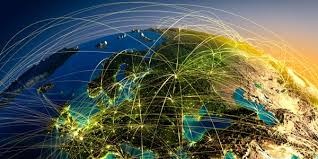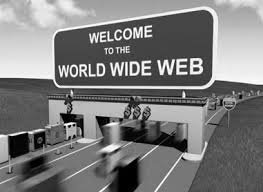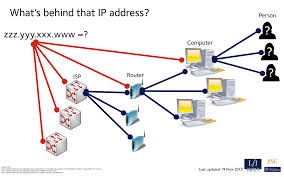“A universal system of integrated computer networks, which makes use of the typical Internet protocol suite (TCP/IP) to grant access to billions of users across the world, is called the Internet.”

Being a huge network containing millions of networks within, internet comprises hundreds of thousands of public, private, business, academic, and official networks that may range from local to global scale and which are connected via a huge expense of wireless, electronic and optical fiber devices. It bears a broad array of data stores and utilities, e.g. the interconnected hypertext records of the World Wide Web (WWW), the infrastructure to provide for email, and peer-to-peer groups.

A number of conventional communicational means e.g. music, telephone, television and film are getting remodeled or re-identified by the Internet, introducing new services such as IPTV and VoIP. Book newspaper and related print media are either being customized to website technology or redesigned into web feeds and blogging. The web has made possible and hastened every conceivable mode of human communication via Internet platforms, instant messaging, and social networking. Online shopping has flourished alike for big trade channels and smart artisans and dealers. Supply chains covering the entire industry have an effect on financial services and business-to-business on the Internet.

The inception of the Internet dates back to a study harnessed by the United States government in the 1960s to develop vibrant, foolproof communication through an array of computer networks. Whereas this development in addition to jobs done in the United Kingdom and France ushered into worthwhile forerunner webs; nevertheless, these precursory Internets were not called the Internet. No consensus is found on the accurate date by which the Internet is supposed to have been hatched. However, the period between early to mid-1980s is strongly believed to mark the coming into being of the modern day internet.

In the 1980s the grant of a latest U.S. backbone by the National Science Foundation in addition to private financial support for related money-making backbones, resulted in global partaking in introducing and the merger of a number of new network systems. While the web services have been far and wide used by academic milieu since the 1980s, the commercialization of a global network by the 1990s resulted in its democratization and integration into practically every walk of contemporary life. More than 2.4 billion people, about a third of the world population have accessed the Internet service by June 2012 which is some 100 times more number of people than they would be during 1995.

There is no central monitoring for the Internet either in technical execution or procedures for the user rights — every integral network lays down its own guiding principles. Just the overextending descriptions of the two key name spaces in the Internet, the Internet Protocol address space and the Domain Name System, are intended for the regulating body, the Internet Corporation for Assigned Names and Numbers (ICANN). The technical reinforcement and regularity of the hub protocols (IPv4 and IPv6) is the job of the Internet Engineering Task Force (IETF), a non-profit concern of casually associated global members who happen to liaise via sharing technical proficiencies.

(n.b: To access more on digital literacy you may click on the following link of mine. Read, like, share and comment as you please. Please also don’t forget to subscribe me, thank you!)
http://www.filmannex.com/blog-posts/azan-ahmed
By
Azan Ahmed
Blogger: FilmAnnex



